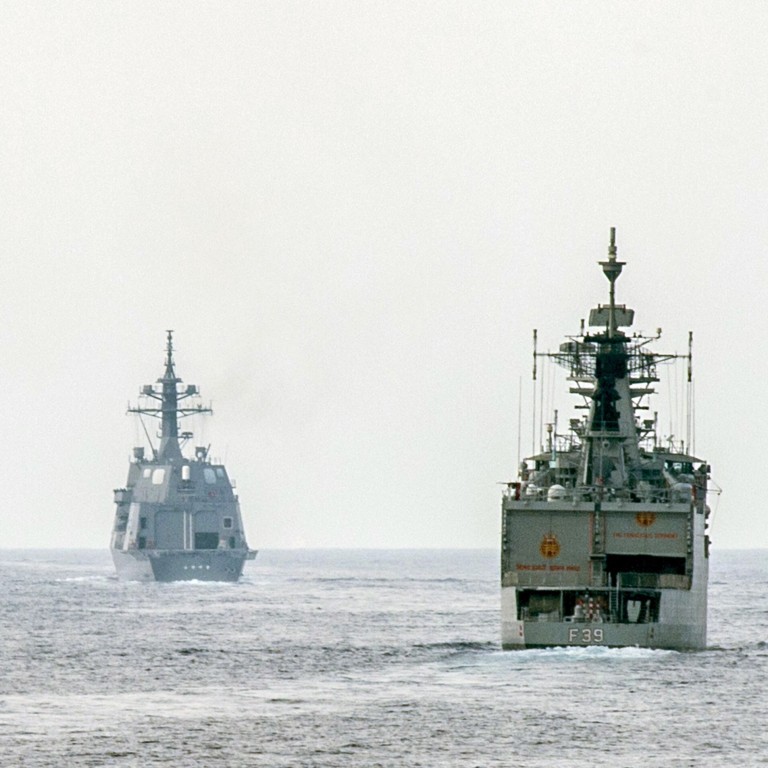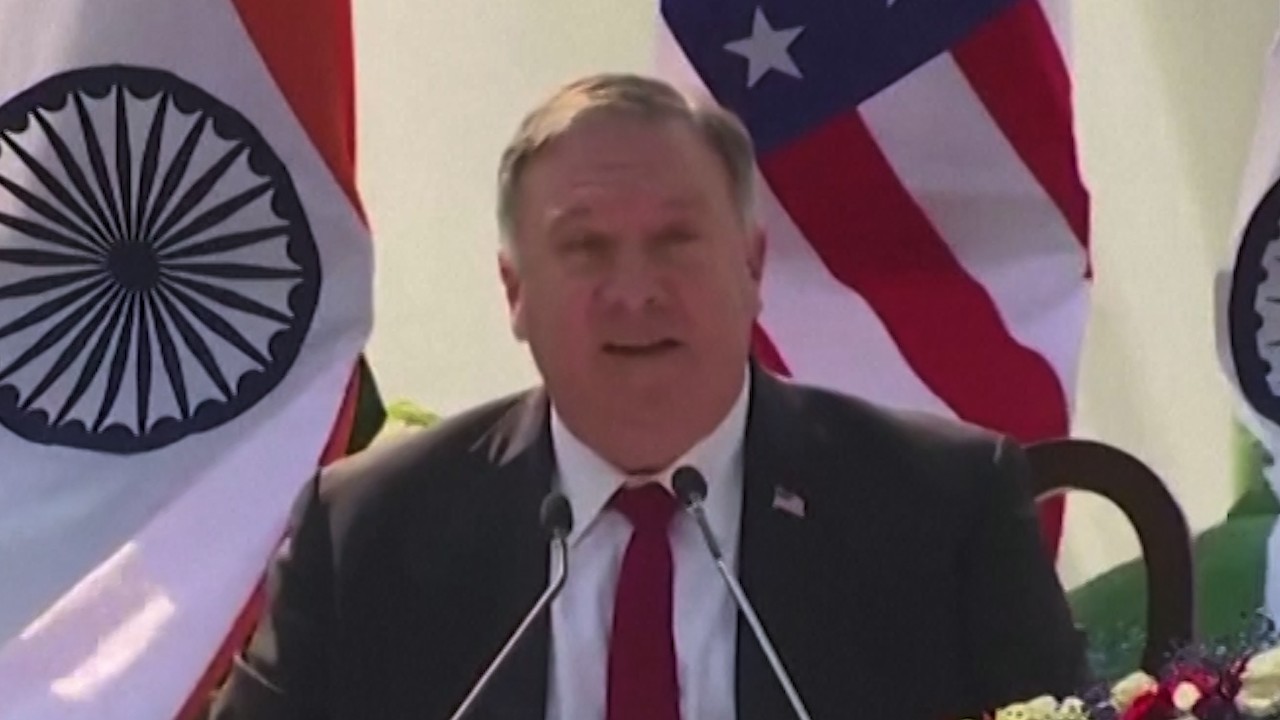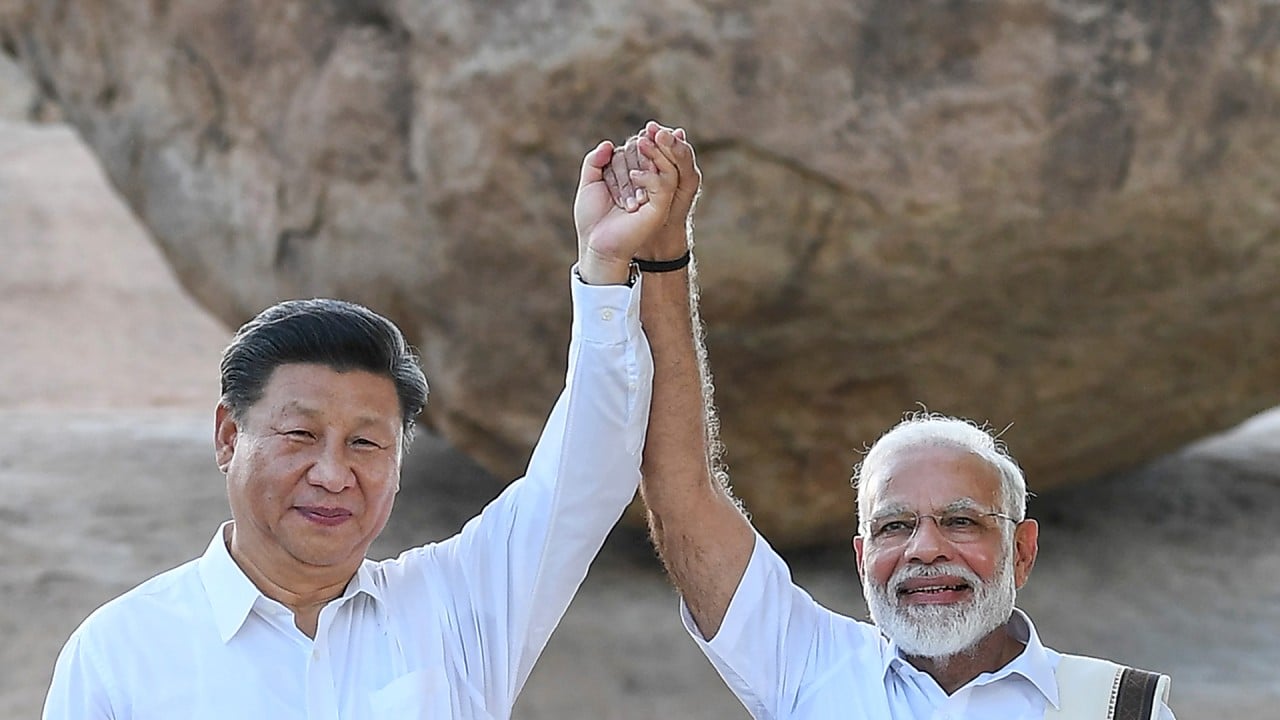
Australia sends signal to China as it rejoins US, Japan and India for Malabar naval exercise
- The Australian navy joins counterparts from the US, Japan and India in the military exercise for the first time in 13 years
- Show of strength follows a deterioration in ties between the four nations and Beijing and comes as China announces new bans on Australian imports
The three-day Malabar exercise off India’s southernmost coast comes amid increasing strain in the relationships between each of the four countries and China, and has been interpreted by many experts as a demonstration of resolve in the face of Beijing’s increasingly muscular foreign policy.

01:15
China-Australia trade: Beijing set to ban nearly US$400 million worth of Australian wheat imports
The Malabar exercise began as a joint India-US exercise in 1992 before expanding to include all four countries. However, Australia and Japan pulled out after the 2007 exercise following a diplomatic protest by Beijing, which had accused the grouping of being an “anti-China coalition”. Japan rejoined in 2015.
With each of the four countries experiencing a steep deterioration in their diplomatic ties with China, the grouping has been revived.
Last month, the foreign ministers of all four nations met in Tokyo to discuss boosting their cooperation in the Indo-Pacific. Two weeks later, India announced the Australian military would once again be taking part in Malabar, indicating the countries had put aside their reservations about being seen to “contain” China, according to analysts.
Why are Chinese-Australians having their national loyalty questioned?
“We have all waited for this to happen for a long time. There was a lot of hesitation between 2007 and now, especially because China saw this as a ganging up of democracies against itself,” said RS Vasan, a retired Indian navy commodore who is now the director of the Chennai Centre for China Studies think tank.
“In some ways, the Quad is coming together thanks to China – its actions have pushed India and Australia from being fence-sitters to willing partners,” said Vasan.

00:39
Pompeo warns of China threat as US and India sign defence pact
A GROWING INTIMACY
Taking part in the first phase of the exercises are the US guided-missile destroyer the USS John S McCain, the Royal Australian Navy’s long-range frigate Ballarat and a destroyer from the Japan Maritime Self-Defense Force, Onami.
Host India will be sending the destroyer Ranvijay, frigate ship Shivalik, offshore patrol vessel Sukanya, fleet support ship Shakti and submarine Sindhuraj. It is also sending aerial units such as the Advanced Trainer Hawk, P-81 long-range maritime patrol aircraft, Dornier maritime patrol aircraft and helicopters. The second phase will be held later this month.
China to ban Australian wheat imports
Vasan said the Malabar exercises might provide a welcome boost to ties between India and an Australia that is now in need of new trade partners.
“I think we will see greater cooperation and a new momentum between the two – Australia wants to diversify its markets and shape new equations with countries,” Vasan said. “After all, the enemy’s enemy is a friend.”
Earlier this year, news reports had indicated that India would step in to import barley from Australia after Beijing imposed a 80.5 per cent tariff on imports of the grain. Beijing is one of the biggest markets for Australian imports – the barley trade alone accounted for more than US$1 billion in 2018.

07:17
China and India: How economically linked are they?
SENDING A SIGNAL
Yogesh Joshi, a research fellow at the Institute of South Asian Studies in the National University of Singapore, said the Malabar exercises might be India’s way of asserting itself against China amid the deadly stand-off in the Himalayas.
“The Quad sends a signal to China that India will not take coercion lying down and will initiate external and internal balancing strategies to meet the challenge of Chinese power,” said Joshi.
Such posturing is in stark contrast to India’s position on the Quad in the past – after the 2007 Malabar Exercises, India was forced to assuage Chinese concerns by insisting that the grouping had no “security implications”.
Political or pragmatic? Is China justified in banning Australia’s coal imports?
Joshi said that the stand-off in the Himalayas and the escalation of tensions meant “costly signals” from Delhi – such as inviting Australian forces to Malabar – were required. “I don’t see how this will further aggravate the tensions; the relations are quite strained,” he added.
However, Manoj Joshi, a distinguished fellow at the Observer Research Foundation think tank in New Delhi said the exercise was so far largely symbolic.
“Each of the members have their specific goals, but they have yet to come out with a joint communique. They need to first figure out their goal,” he said.

